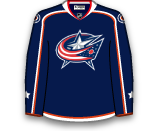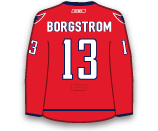
NHL Transactions & Roster Moves






Raska failed to pick up a point, while getting one SOG through three games with the San Jose Sharks and has been resigned to the San Jose Barracuda (AHL) Wednesday. The 21-year-old returns to the minors, where he had four goals, seven assists, 121 PIMs and a -6 plus/minus through 53 games played prior to his previous call-up.

Janik had seven goals, 16 assists, 50 PIMs, and a +3 plus/minus through 30 games with Tucson (AHL) and has been recalled to Arizona for a second time this season. The 22-year-old played in one NHL game earlier this season, failing to pick up a point and grabbing four PIMs in the process.

Swaney had 16 goals, 12 assists, 14 PIMs and a +13 plus/minus through 46 games with Iowa (AHL) and has been recalled to Minnesota for the first time Wednesday. The 25-year-old was the Wilds' 2017 seventh-round pick (209th overall) and is expected to make his NHL debut Thursday.

Walker had 26 goals, 20 assists, 23 PIMs and a +18 plus/minus through 54 games with Iowa (AHL) but has been recalled to Minnesota on Wednesday with expectations to be in the lineup Thursday. The 23-year-old had a goal in eight games previous with Minnesota in his previous call-up this season.

Wolf was 41-9-2 with a .932 SV% and 2.08 GAA with the Calgary Wranglers (AHL) and was recalled to make his NHL debut Wednesday vs. San Jose. The 21-year-old was Calgary's 2019 seventh-round pick (214 overall).

Bussi was 21-5-4- with a .925 SV% and 2.38 GAA and has been recalled from providence (AHL) for the first time this season. The 24-year-old has had an impressive rise after beginning the season in the ECHL.

Ginning made his NHL debut Tuesday night vs. Columbus and played 21 shifts, 16:40 TOI and picked up two PIMs in his first taste of NHL action. The 23-year-old returns to Lehigh-Valley (AHL), where he has three goals, 19 points, 61 PIMs and a +25 plus/minus through 65 games prior to his call-up.

Jiricek has failed to pick up a point through four games played, with five SOG and a -4 plus/minus but has been reassigned to Cleveland (AHL) Wednesday. Jiricek returns to Cleveland where he had six goals, 32 assists, 34 PIMs and a -8 plus/minus in 52 games with the Cleveland Monsters (AHL) before being called to Columbus on an emergency basis Tuesday.

Christiansen has four assists, 25 SOG, a -7 plus/minus and four PIMs through 24 games with Columbus this season but has been reassigned to Cleveland (AHL) Wednesday. Christiansen had eight goals, 22 assists, 53 PIMs and a -1 plus/minus through 47 games with Cleveland (AHL) before being recalled to Columbus on an emergency basis Tuesday.

Fix-Wolansky scored his first NHL goal of the season Tuesday to go along with his 19 SOG and -5 plus/minus rating through nine games this season with Columbus but was reassigned to Cleveland (AHL) on Wednesday. Fix-Wolansky had 19 goals, 70 points, 38 PIMs and a -5 plus/minus through 58 games with Cleveland (AHL) before he was recalled to Columbus on an emergency basis Tuesday

Meyer has an assist, 17 SOG, six PIMs and a -2 plus/minus through 14 games played with Columbus but has been reassigned to Cleveland (AHL) Wednesday. Meyer had nine goals, 17 assists, 34 PIMs and a +8 plus/minus through 31 games played with Cleveland (AHL)before being recalled Tuesday to Columbus on an emergency basis.

Dunne failed to pick up a point through eight games this season but has four SOG, six PIMs and a -6 plus/minus but will head back to Cleveland (AHL) Wednesday. The 24-year-old Meyer had 20 goals, 17 assists, 69 PIMs and a -8 plus/minus through 62 games with Cleveland (AHL) before being recalled on an emergency basis Tuesday.

Borgstrom had eight goals, 13 assists, 10 PIMs and a -4 plus/minus through 54 games with Hershey (AHL) this season and has been called up to Washington to make his Capitals debut Tuesday. The 25-year-old has previously played in 110 NHL games, picking up 13 goals, 13 assists, and 104 SOG.

Woll had a 16-4-1 record, .927 SV% and 2.37 GAA and has been recalled from the Toronto Marlies (AHL) on Tuesday as Ilya Samsonov deals with an injury (undisclosed). The 24-year-old netminder returns to the Maple Leafs, where he was sensational during his previous call-ups with his 4-1-0 record, .932 SV% and 2.02 GAA.
